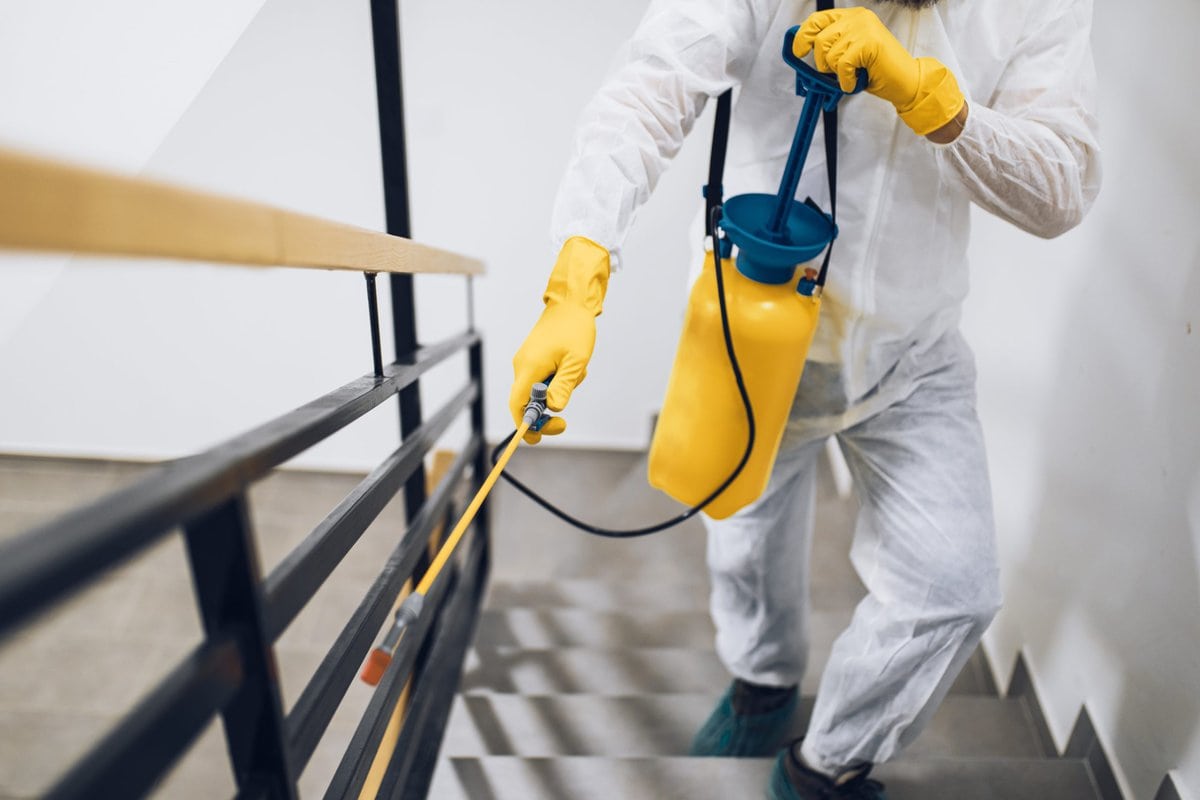Expert Pest Control Auckland: Trusted Solutions for Your Satisfaction
Wiki Article
Understanding Various Kinds of Insect Control Methods and Their Effectiveness
When taking into consideration insect control methods, it is important to recognize the varied techniques offered and their differing degrees of effectiveness. By discovering the nuances of these parasite control methods, an extensive understanding of how to resolve insect concerns can be established.Chemical Parasite Control Techniques
Chemical bug control methods play a critical function in effectively managing and getting rid of pest invasions in various atmospheres. One of the crucial benefits of chemical parasite control is its capacity to give fast and targeted options to pest problems. Pest Control Auckland.Nevertheless, it is crucial to consider the potential risks and drawbacks related to chemical pest control methods. Overreliance on chemicals can result in the development of pesticide resistance in pests, making them more difficult to manage in the future. Additionally, using particular chemicals can have harmful effects on non-target microorganisms, the setting, and human wellness otherwise applied correctly.

Organic Insect Control Approaches
Using all-natural killers and microorganisms to manage parasite populaces efficiently, organic bug control techniques offer a lasting and environment-friendly strategy to pest monitoring. By introducing or promoting the task of microorganisms that normally victimize or contaminate insects, such as ladybugs for aphid control or particular bacteria for caterpillar invasions, organic control can aid maintain bug populaces at manageable levels without the requirement for artificial chemicals. This technique is particularly useful for natural farming practices, as it prevents using potentially harmful compounds while maintaining crop wellness.
Physical Pest Control Techniques
While organic parasite control approaches concentrate on utilizing natural killers and virus, physical pest control techniques use mechanical and physical obstacles to take care of parasite populaces. These techniques are typically considered eco-friendly as they lessen using chemicals. Physical parasite control consists of methods such as trapping, making use of barriers like internet or displays, and physically removing parasites from the area.Traps are commonly used in physical pest control to record and get rid of bugs like pests and rats. These traps can be baited with food or scents to draw in the insects, leading them to a contained location where they can be easily dealt with. An additional physical approach is the use of barriers such as displays, fencings, or nets to stop parasites this content from entering or infesting specific areas. Mounting fine mesh screens on windows can aid maintain out mosquitoes and flies. Pest Control Auckland.
Natural Pest Control Methods
Integrating natural predators and plant-based repellents is a vital approach in carrying out efficient Read More Here natural parasite control techniques. By encouraging the visibility of valuable insects like ladybugs, lacewings, or predacious mites, garden enthusiasts can normally regulate pest populations. These killers eat typical garden insects such as caterpillars, termites, and aphids, assisting to maintain a balanced ecosystem without the demand for chemical interventions.
Additionally, executing social techniques such as crop turning, companion planting, and maintaining proper plant health and wellness can likewise improve the efficiency of all-natural bug control approaches. These strategies not just aid in preventing pest infestations yet also advertise biodiversity and total ecological community durability. By integrating these natural methods, individuals can successfully manage parasites while decreasing ecological impact.
Integrated Bug Administration (IPM) Approach
Carrying Out an Integrated Parasite Monitoring (IPM) technique is necessary for successfully managing parasite populations while reducing dependence on chemical pesticides. IPM is a lasting and thorough strategy that incorporates different insect control methods to attain long-lasting services. This approach concentrates on prevention, surveillance, and control to resolve parasite issues in an eco-friendly fashion.IPM incorporates organic, social, physical, and mechanical strategies with the limited and strategic use pesticides when required. By emphasizing proactive steps such as habitat modification, biological control, and exclusion, IPM intends to lower parasite populaces and their effect on the ecological community. Normal surveillance is critical in IPM to analyze parasite degrees precisely and figure out the most suitable control methods.
Among the vital benefits of IPM is its capability to reduce the risks related to too much chemical usage, such as environmental contamination and damage to non-target organisms. Additionally, IPM advertises a much more alternative method to pest management by considering the total environment dynamics. Overall, the IPM strategy uses a efficient and sustainable solution for bug control while promoting ecological obligation.
Conclusion
Finally, comprehending the different kinds of insect control methods and their performance is vital in efficiently taking care of insect problems. Chemical, biological, physical, and all-natural bug control methods each have their very own advantages and restrictions. Integrated Pest Administration (IPM) approach, which integrates various techniques for sustainable bug control, is increasingly being identified as a environmentally friendly and all natural service. By making use of a mix of these techniques, companies and people can successfully regulate pests while reducing injury to the setting.Chemical insect control go techniques play an essential function in properly taking care of and getting rid of pest problems in various settings.Making use of all-natural killers and microorganisms to handle insect populations efficiently, biological pest control methods offer a lasting and eco-friendly strategy to pest administration. By advertising the activity or introducing of microorganisms that normally prey on or infect pests, such as ladybugs for aphid control or certain microorganisms for caterpillar invasions, organic control can assist maintain parasite populaces at workable levels without the demand for synthetic chemicals.While biological parasite control techniques focus on harnessing all-natural predators and pathogens, physical bug control techniques utilize physical and mechanical obstacles to manage parasite populations. Integrated Insect Monitoring (IPM) technique, which combines different approaches for lasting parasite control, is increasingly being recognized as a eco pleasant and all natural remedy.
Report this wiki page